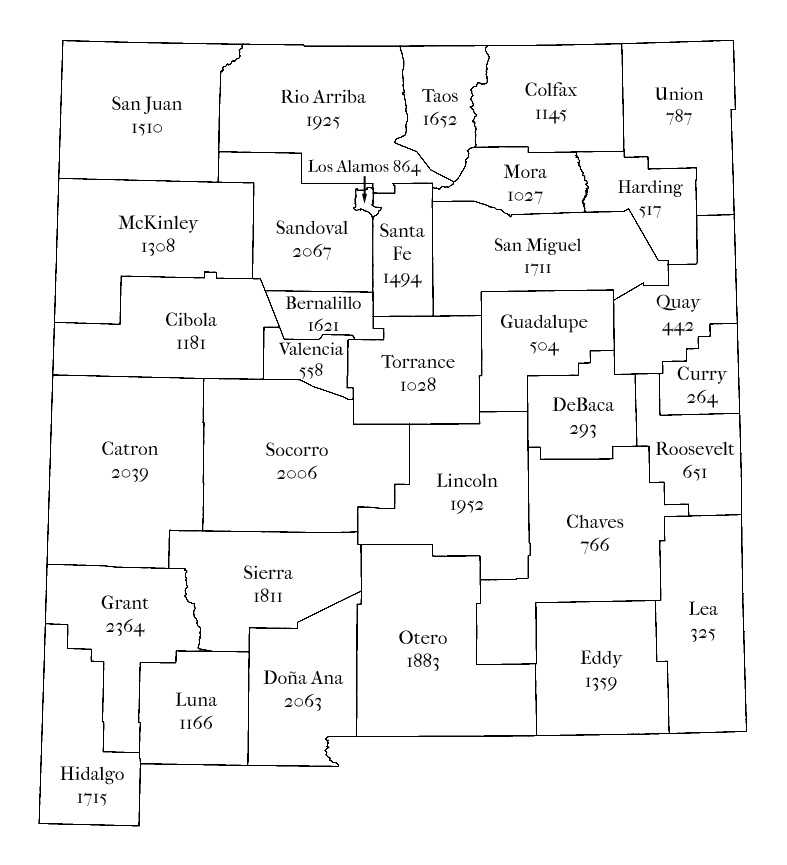From 14 Oct 2010.
Out of curiosity, I decided to find out how many taxa (species + varieties or subspecies as applicable) are recorded from each of the counties of New Mexico. I searched the herbarium records at swbiodiversity.org & ran the results through the ASU taxonomic database, which will keep the same taxon from showing up multiple times if it’s listed under several synonyms. Of course, the taxonomic filter only works if the ASU database contains the appropriate names and synonymies; generally speaking it probably does, but there are certainly omissions and errors as well. There’s also some error in specimens being recorded for the wrong county due either to error when databasing, the collector not really knowing where he or she was, or changing county boundaries. So, the numbers are quite approximate but as good as can be done without devoting considerable time to the project. That said, here are the results on a map:
Now, one reason for doing this is that I had heard, from Dr. Heil at San Juan College, that Rio Arriba was the most diverse county in the state botanically. I was skeptical, but didn’t really know any better, but now I at least have some basis to believe otherwise; Grant County appears to be most diverse, with Rio Arriba in seventh. My initial guess was that Doña Ana or Hidalgo County would come out on top; with Doña Ana in third I guess that’s not bad, though Hidalgo’s a bit further down. Differing results between myself and Dr. Heil may be due to his use of the NMBCC (New Mexico Biodiversity Consortium) database at nmbcc.org; this database includes only the holdings of New Mexico herbaria, while swbiodiversity.org includes New Mexico holdings from the Arizona herbaria and a few others.
It’s also worth mentioning that there are some obvious biases in collecting. The eastern counties, in particular, are poorly collected. However, this alone is unlikely to account for their low diversity. For instance, there have been at least one or two floristic inventory projects in Roosevelt County (including a flora of Milnesands by Rob Strahan), and so it has about twice as many species recorded from it as most of the surrounding counties. However, the total of 651 is still unimpressive.


Another potential source of error is worth mentioning: some herbaria include collections of cultivated species that do not otherwise occur in New Mexico (or in the county in question). Ideally, these numbers would be purged of those species, but this would be rather time-consuming…
An update: Dr. Heil has been refining his county-level plant lists (which are vastly better than my quick-and-dirty number estimates) and is now agreed in finding Grant County to be the most diverse in the state.